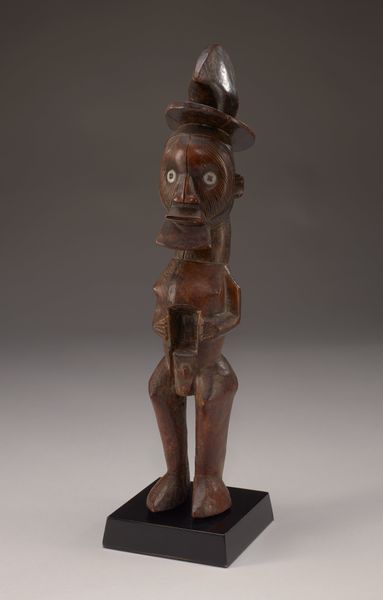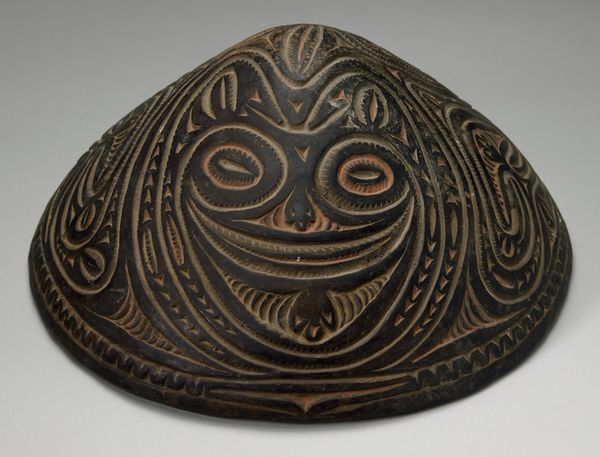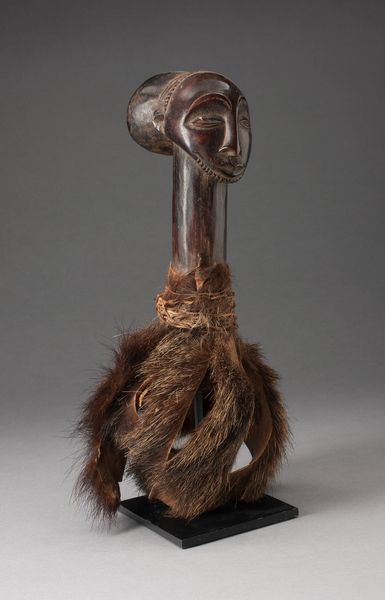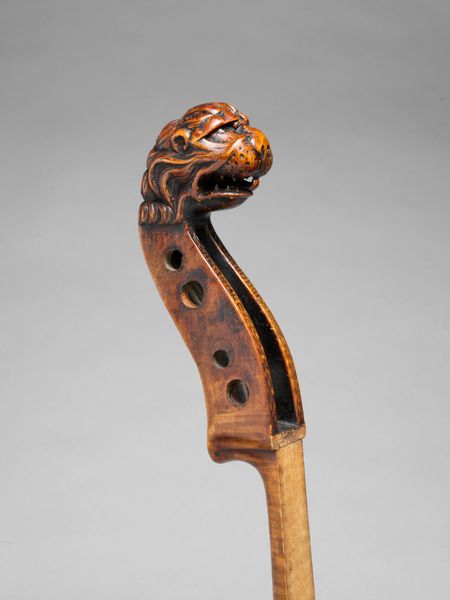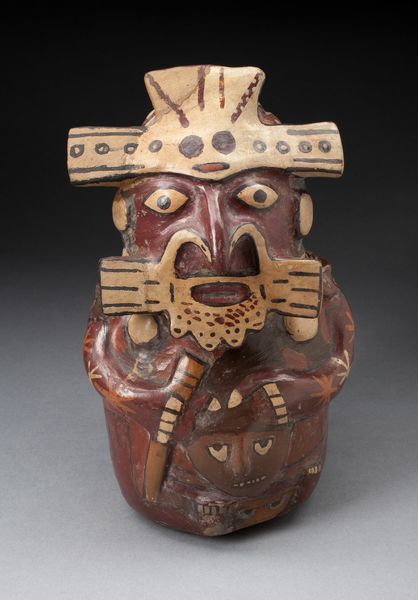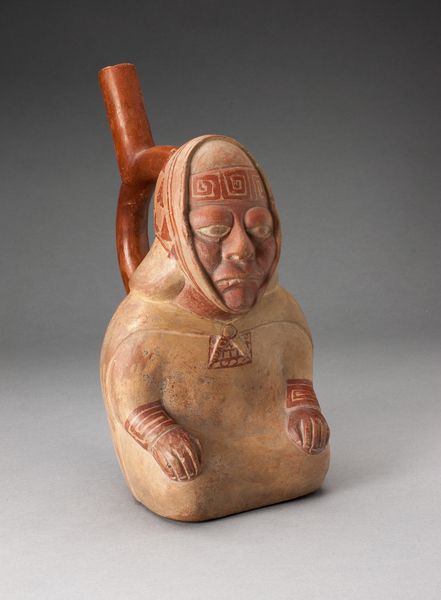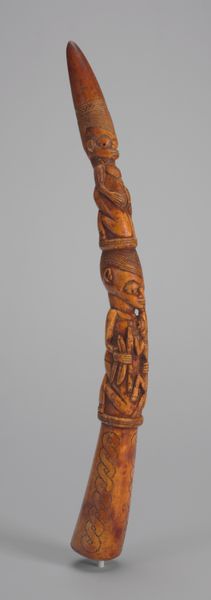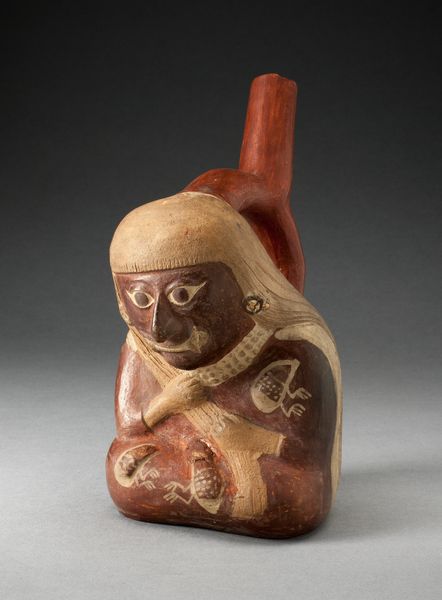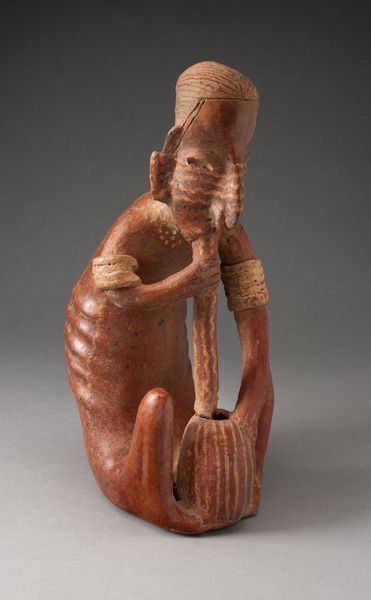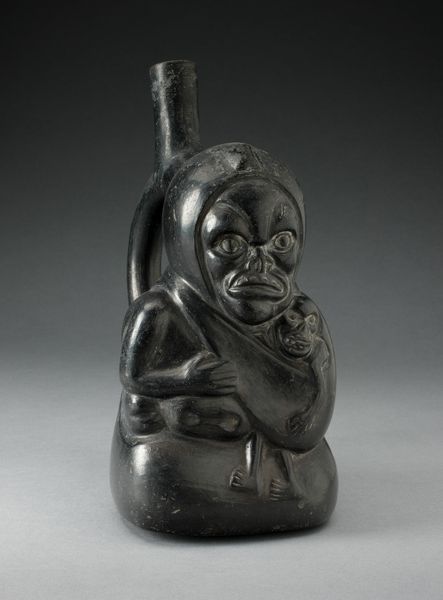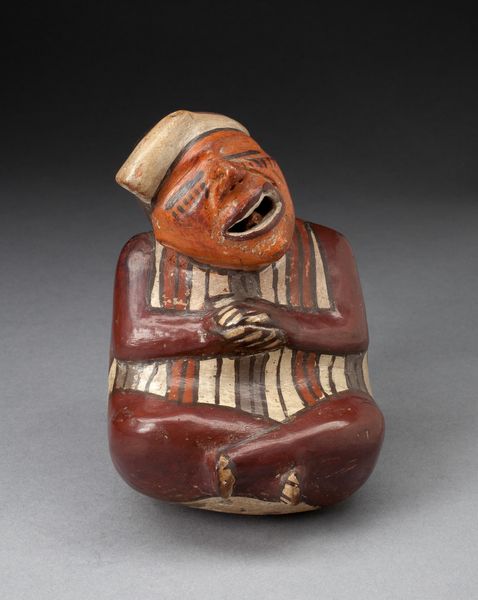
carving, sculpture, wood
portrait
carving
sculpture
figuration
sculpture
wood
Dimensions 34 7/8 x 6 1/8 x 3 3/4 in. (88.58 x 15.56 x 9.53 cm)
Editor: This intriguing sculpture is titled "Tekoteko," and it dates back to the 18th century. It’s attributed to the Maori people and crafted from wood. The figure has an intense expression. What stories can we unpack from this piece? Curator: The Tekoteko is a powerful embodiment of Maori ancestral connections, and their complex relationship with power, identity and representation. The exaggerated features – the large head, the hands placed on the belly – speak volumes. Considering the era it was created, it invites critical discussion of gender roles and concepts of fertility. Do you notice how the intricate carvings almost serve as a second skin? Editor: Yes! The surface is so alive, those spirals, they almost seem to move. And is the figure meant to be male or female? Curator: That’s a key question! The ambiguous presentation encourages a deconstruction of binary gender norms. Are we looking at a representation of a pregnant ancestor, emphasizing lineage and continuity? Or is there something more complex at play here, perhaps a challenge to fixed notions of gender and power within Maori society? How does the object subvert colonial perspectives? Editor: Subvert in what way? Curator: Colonial gazes often imposed rigid interpretations onto Indigenous cultures. A Tekoteko resists such simplistic categorizations. The bulging belly could also suggest mana, a spiritual power and prestige. The surface ornamentation then, through the gaze of the colonizer, gets dismissed, but is actually activated through tactile and visual contact through those who know how to use it. It stands defiant against any singular interpretation. It is complex because the communities it comes from are complex. Editor: I hadn’t thought about the gaze being another layer of interpretation. So much meaning packed into one figure! Curator: Exactly. And by grappling with those complex issues of representation, we not only deepen our appreciation of this piece, but challenge dominant power dynamics that continue to silence marginalized voices. Editor: It gives me so much to consider. Thanks for the illuminating perspective!
Comments
No comments
Be the first to comment and join the conversation on the ultimate creative platform.


